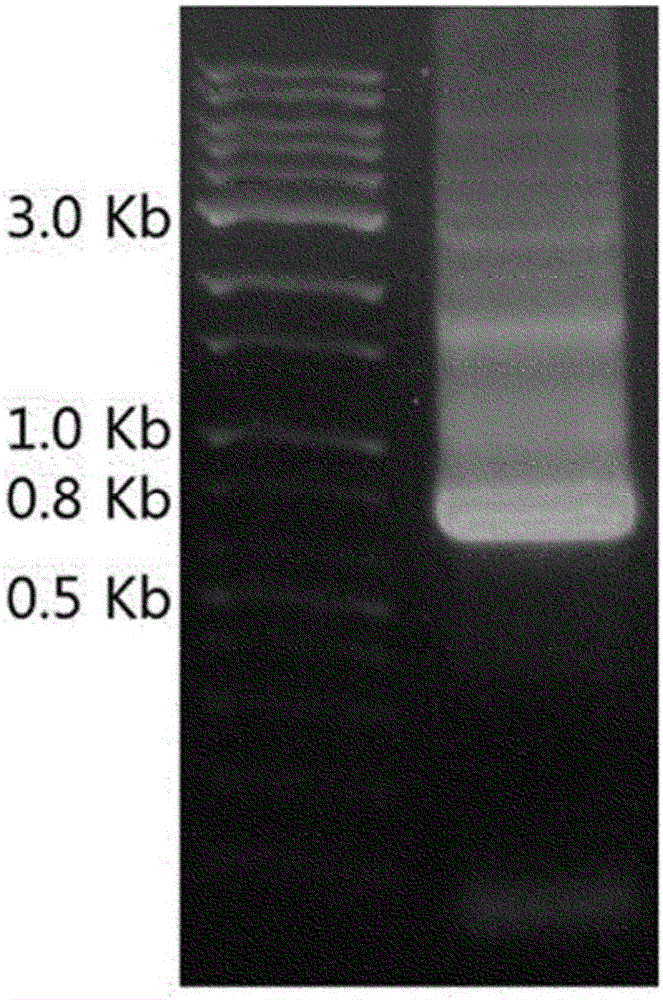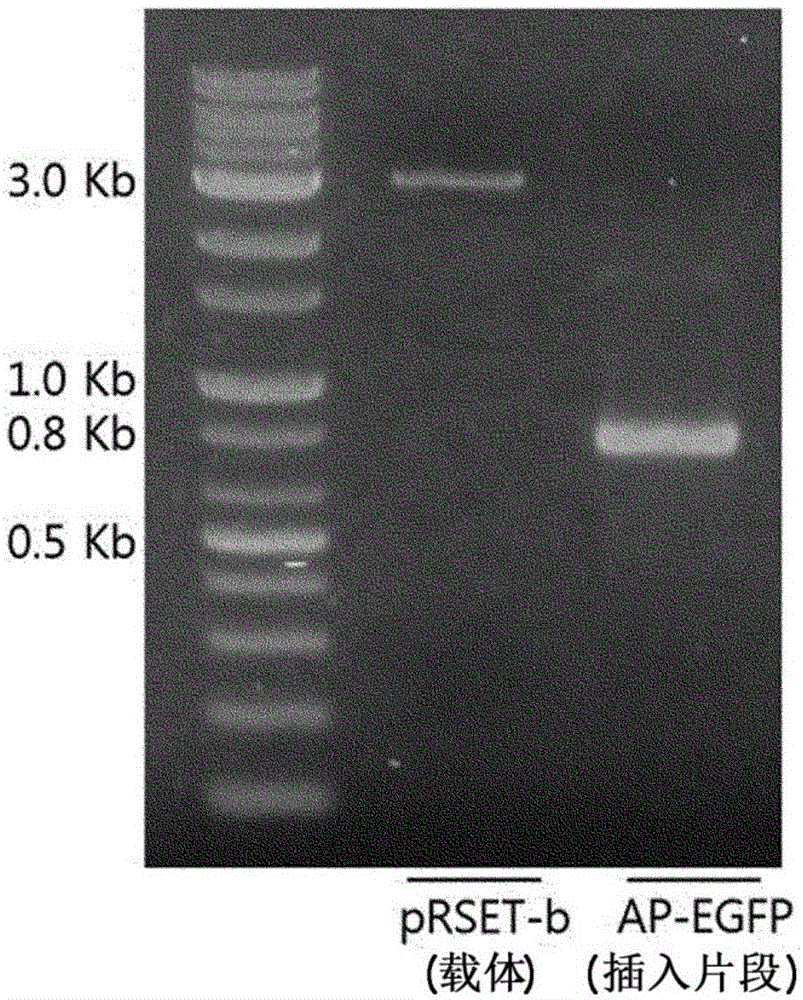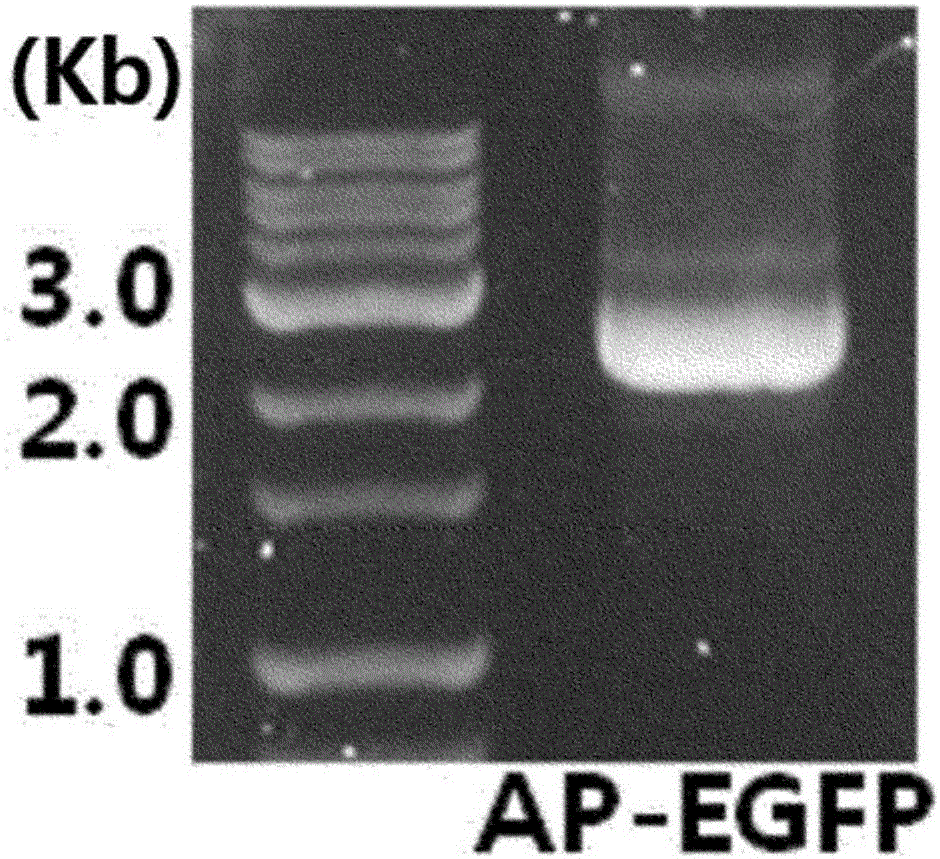Cell penetrating peptide and method for delivering biologically active substance using same
一种生物活性物质、穿透肽的技术,应用在生物活性物质输送到细胞内的系统领域,能够解决副作用、连接效率低、不需要免疫应答等问题
- Summary
- Abstract
- Description
- Claims
- Application Information
AI Technical Summary
Problems solved by technology
Method used
Image
Examples
preparation Embodiment 1
[0065] Preparation Example 1: Synthesis and Purification of Peptides
[0066] Peptides having the amino acid sequences of SEQ ID NO 1 to SEQ ID NO 12 were synthesized.
[0067] After synthesizing sense oligodeoxynucleotides and antisense oligodeoxynucleotides corresponding to the amino acid sequences, followed by removal of secondary or tertiary structures (denaturation) at 95°C for 3 minutes, by changing the temperature to 50°C and then Double-stranded DNA was prepared for 72°C. For insertion into the pRSET-b vector, restriction enzyme specific sequences were inserted into the 5' site and the 3' site except for the sense oligodeoxynucleotide and the antisense oligodeoxynucleotide. The sequence was then amplified in large quantities by transformation into E. coli. After confirming the integrity of the sequence, expression was induced in E. coli.
[0068] In order to fuse a peptide having the amino acid sequence of SEQ ID NO 1 (hereinafter also referred to as "AP") and enhan...
preparation Embodiment 2
[0069] Preparation Example 2: Preparation of double-stranded DNA encoding AP having EGFP linked at N-terminus
[0070] A forward primer was constructed by adding a DNA base sequence encoding a peptide having an amino acid sequence of SEQ ID NO 1 to a DNA base sequence encoding an N-terminal portion of enhanced green fluorescent protein (hereinafter also referred to as "EGFP").
[0071] The forward primer of SEQ ID NO 13 contains an NheI restriction enzyme recognition site for DNA cloning at the 5' end and a BamHI restriction enzyme recognition site between the base sequences of AP and EGFP. Meanwhile, a reverse primer of SEQ ID NO 14 was constructed for amplifying AP-EGFP by PCR. The reverse primer contains the DNA base sequence encoding the terminal portion of EGFPC. For DNA cloning, a HindIII restriction enzyme recognition site was inserted into the 5' end of the primer.
[0072] PCR was performed using the pRSETb vector containing the EGFP gene as a template and using the...
preparation Embodiment 3
[0074] Preparation Example 3: Preparation of pRSETb vector inserted with AP-EGFP
[0075] In order to express the AP-EGFP protein, the 789-bp DNA fragment prepared in Preparation Example 2 was inserted into the protein expression vector pRSETb using restriction enzymes and ligases.
[0076] The DNA fragment amplified in Preparation Example 2 was treated with NheI and HindIII (NEB) enzymes to make the 5' / 3' ends of the DNA sticky. At the same time, pRSETb was treated with the same restriction enzymes to prepare a linear pRSETb vector having NheI and HindIII insertion sites. After each enzymatic reaction, products were isolated using a PCR purification kit (Cosmo Genetech).
[0077] The isolated AP-EGFP double-stranded DNA fragment and pRSET-b vector were treated with T4 ligase (NEB) for 2 hours at 25°C. The concentration of AP-EGFP double-stranded DNA fragment and pRSET-b vector was analyzed by 1% agarose gel electrophoresis ( figure 2 ).
[0078] The obtained pRSETb vecto...
PUM
 Login to View More
Login to View More Abstract
Description
Claims
Application Information
 Login to View More
Login to View More - R&D
- Intellectual Property
- Life Sciences
- Materials
- Tech Scout
- Unparalleled Data Quality
- Higher Quality Content
- 60% Fewer Hallucinations
Browse by: Latest US Patents, China's latest patents, Technical Efficacy Thesaurus, Application Domain, Technology Topic, Popular Technical Reports.
© 2025 PatSnap. All rights reserved.Legal|Privacy policy|Modern Slavery Act Transparency Statement|Sitemap|About US| Contact US: help@patsnap.com



